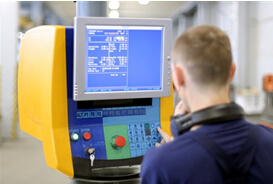Abstract: In our daily life, tactile feedback is widely used in touch screens such as mobile phones, tablets, cameras, etc., bringing us a new user experience and fun. The experience of being at your fingertips In the process of continuous improvement, the related electronic technology is constantly innovating and new requirements for products and designers. TI's engineers are constantly innovating, working hard to provide haptic feedback products for a wider range of applications, and creating endless possibilities for a day-to-day life.

The touch screen seems to be everywhere. Today, almost any smartphone has some type of touch screen. Most of the tablets are no exceptions. The check-in counters at the airport, the GPS navigation in the vehicle, and the cameras in our hands have all been converted from physical buttons to touch screens. When you tap the text message with your finger or press the button on the screen, feel carefully what happened. Although you are touching the screen, there may be a click or touch. This is what we often call "tactile feedback." Haptic feedback is the use of electronic technology to simulate the feeling of touch. This technology has been used for a long time in the joysticks of video games and on the handles, pedals and steering wheels in training simulators used by pilots or law enforcement personnel. Today, tactile feedback finds its place on flat-panel displays that are commonly used around the world.

Tactile feedback mainly presents two forms of sensation: the first is full vibration, in which case the entire device vibrates, such as setting the phone to vibrate for incoming calls; the second is local vibration, ie slight and short under the fingertips Vibration. The importance of tactile feedback is not only because it makes the use of the touch screen easier and more fun, but also because it adds new features. By providing feedback to users to perceive information about device operation, users are better able to control and improve the use of applications that are closely related to information security. Haptic feedback can also be used to distinguish a company's products from those of other companies.
In the field of replacing the mechanical keys on traditional computer keyboards with flat-panel electronic buttons, this new tactile feedback frontier application has a unique development prospect. As flat-panel touchscreens continue to infiltrate all aspects of our lives, correspondingly, haptic feedback techniques must also meet the need for a more realistic touch feel. For example, if a flat-panel touch screen replaces a traditional button on an assembly line, the tactile feedback should provide the worker with the same feel as before, ensuring that they press the correct button while looking at the assembly line. By adding a tactile feedback "physical bump" on the touch screen, productivity and security can be greatly improved.
Coincidentally, the keypad application can also help restaurant waiters enter the menus they order in the system, or use them for next-generation TV remotes and computer mice. Haptic feedback helps users take advantage of their sense of touch, not just their vision or hearing, ultimately improving the accuracy of text entry and job performance. The widespread use of this technology also places new demands on both products and designers.
Haptic feedback devices in handheld or battery-powered applications must be small, highly integrated, and have very low power consumption. At the same time, the hardware must be easily designed into electronic components through simple and straightforward software.
TI engineers are leveraging their enthusiasm and creativity to ensure that our tactile feedback products are designed to be quickly and cost-effectively designed for a wide range of applications. For more information on TI's haptic feedback technology and technical explanations and explanations of the components used, please read the latest white paper.
One day, tactile feedback will give the user more experience than vibration, which will never have been achieved on a flat touchscreen.
We believe that in the future, when you shop online, you will be able to feel the difference between silk clothing, cotton shirts or sweaters. Or, students can learn animal-related knowledge by feeling the actual touch of the crocodile's rough skin in the classroom. Our engineers can't wait to see the infinite possibilities that customers can achieve by using our tactile feedback technology.
FIRSTPOWER offers a full assortment of deep-cycle batteries delivering a multitude of applications as Main Power. Uses and applications include materials handling, cleaning machines, airport ground support, automated guided vehicles, underground mining, personnel carriers, aerial lifts, neighborhood electric vehicles, and railway locomotive starting.
Main Power,Motive Battery,Maintenance Free Motive Battery,Motive Power Battery
Firstpower Tech. Co., Ltd. , https://www.firstpowersales.com